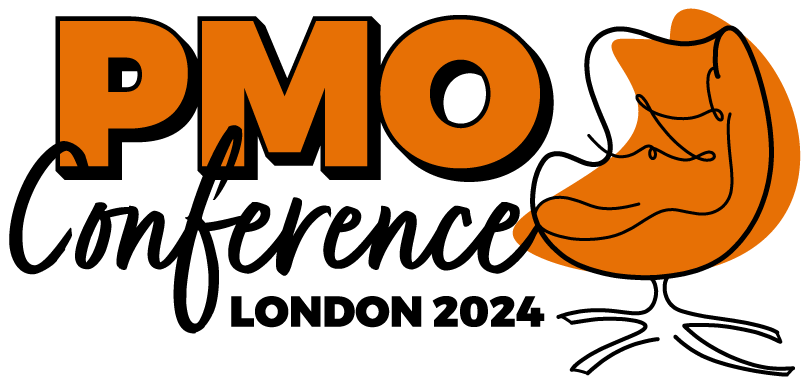You can find all our articles for Free Members
How to Set Up a Lessons Learned Review / Ask the Expert
 Do you have a PMO question that you need an answer for? At the House of PMO we are always ready to hear about a challenge you have or help to find an answer to a question that will help your PMO be successful. One member asked a question:
Do you have a PMO question that you need an answer for? At the House of PMO we are always ready to hear about a challenge you have or help to find an answer to a question that will help your PMO be successful. One member asked a question:
“Do you have a template I could review for sending out prior to facilitating a lessons learnt session please?”
Here’s our AI-generated response:
Before diving into a lessons learnt session, you’ll want to get a few things arranged:
- Gather Data: Collect all relevant info on what went down during the project. This can be documents, emails, or any data that sheds light on project performance.
- Invite the Right People: Make sure everyone who’s got valuable insights is on the guest list. This usually means team members, stakeholders, and anyone else involved in the project.
- Set Clear Objectives: Know what you want to get out of the session. Is it to improve processes, avoid past mistakes, or both?
- Create a Safe Space: Emphasise that it’s all about learning, not blaming. You want folks to feel comfy sharing the good, the bad, and the ugly.
- Prepare Questions: Have a list of questions ready to guide the discussion and make sure you cover all bases.
- Organise Logistics: Sort out where and when it’ll happen, and make sure everyone knows how to join, especially if it’s a mix of in-person and virtual.
Example template email:
Subject: Upcoming Lessons Learnt Session – Let’s Wrap This Up Together!
Hey Team,
As we wrap up on our project, it’s time to gather round (virtually or physically) for our Lessons Learnt Session! This is our chance to share insights, celebrate our wins, and learn from our challenges. Your input is crucial to make our future projects even smoother.
When: [Date & Time]
Where: [Location/Link to virtual meeting room]
Duration: [Expected duration]
What to Expect:
A relaxed, blame-free zone where we can all share our thoughts.
A chance to highlight what worked well and what could be better.
An opportunity to contribute to our team’s growth and success.
Before the Session:
Please take a moment to think about the following questions:
- What went particularly well for us?
- What challenges did we face and how did we overcome them?
- Any “Aha!” moments or key learnings?
- Ideas for improvements on future projects?
Feel free to bring any project-related documents or data that you think could help our discussion.
RSVP: Kindly let me know by [RSVP date] if you’ll be able to make it.
Looking forward to a productive session and hearing all your insightful feedback!
Cheers,
[Your Name]
[Your Contact Information]”
We asked our expert, Ken Burrell, what he would recommend:
The AI has done a reasonable job here, but there are some things here that I would challenge.
1. When to do it
The way that the AI has used the phrase “…as we wrap up the project…” implies that a single review is taking place at the end of the project. But it would be better not to leave learning lessons until then!
Every Go Live, every weekly project team meeting is an opportunity to learn.
Set up a place to capture lessons (could be a spreadsheet, a SharePoint list, or some sort of web form). Make learning lessons from the delivery a standing item in your meetings, and it won’t feel like such an undertaking at the end.
2. What to do
The AI response implies that the review is just a workshop.
But I would suggest you carry out a web survey before the workshop, to get views that might be too contentious to air for the first time in a face to face meeting.
This will also get you views from people who can’t get to the workshop or who were only involved in a small part of the project, so attending the whole workshop wouldn’t be a good use of their time.
As well as asking what went well and what didn’t go so well, I find it useful to ask what surprised people, and what happened that they didn’t understand. This can be very helpful in revealing hidden assumptions.
3. Who to involve
I would involve representatives from all the groups of people involved with the project: Team members, external suppliers, end users, etc.
If possible, attributing views to these groups will help you to better understand what is going on.
For example if the project team thought that Go Live was great but the end user population strongly disagreed, that would suggest that improvement could be made in Change Management, Communications and Training.
If the project team thought that the project was managed well financially but suppliers report issues with obtaining prompt payment, then processes between Projects, Procurement and Finance might need to be slickified™.
4. How to do it
 I would suggest that the review should incorporate at least some elements of anonymous contribution – maybe using a web survey as mentioned earlier.
I would suggest that the review should incorporate at least some elements of anonymous contribution – maybe using a web survey as mentioned earlier.
This is especially important if the review is likely to raise contentious points, or the organisational culture is hostile and the contributors don’t feel they have psychological safety.
It is much easier and less socially risky to agree with a contentious point that has been raised by some anonymous “third party” survey respondent and presented to group discussion (even if that person was actually you!) than it is to raise the point yourself in front of a (potentially unreceptive or even hostile) group.
5. Where to do it
This is about creating a level playing field for contribution. Choose somewhere central so that as many people as possible can get there. Lay on refreshments. Take regular breaks.
Steer away from partly remote and partly in a meeting room, as this is the worst of both worlds. Whoever is remote will probably get talked over, and will find it hard to hear and read body language properly.
6. Why you are doing it
You are not doing the review to identify who is responsible for anything that went wrong so that you know where to lay the blame.
You are doing the review to collectively learn from the experience of delivering the current projects so that future projects can run more smoothly.
Make sure everybody knows that, and agree ground rules for dealing with unhelpful behaviour.
7. Engage someone independent?
Running a lessons learned review requires quite a few specialist skills, so it may be worth thinking about having it done independently, which:
- Reduces bias
- Levels the playing field
- Leads to better behaviour, more contribution
- Enables naïve questions
- Helps you navigate the minefield
- Saves you work when your energy is lowest
Ken Burrell is one of our go-to experts on tooling and technology. You can find out more about Ken [here] and you can link with Ken on [Linkedin here]
8. Recommended resources
- Ken’s book “Learning Lessons from Projects: How it works, why it goes wrong, and how you can do it better” [Get the book]
- Previous session on Lessons Learnt about Lessons Learnt (Jun 21, comprehensive) > Click to watch and read
- A stand-up on Lessons Learnt (Dec 2018, 15 mins) > Click to watch
- Is it time to admit defeat with Lessons Learnt? > Click to watch
- How to run a retrospective remotely [Visit YouTube]
- The PMO Professionals™ Lessons Learned article archive [Get Exploring]
- Why you should have your retrospective run independently [Read the article]
 Ken Burrell is one of our go-to experts on all things lessons learnt. You can find out more about Ken [here] and you can link with Ken on [Linkedin here]
Ken Burrell is one of our go-to experts on all things lessons learnt. You can find out more about Ken [here] and you can link with Ken on [Linkedin here]

